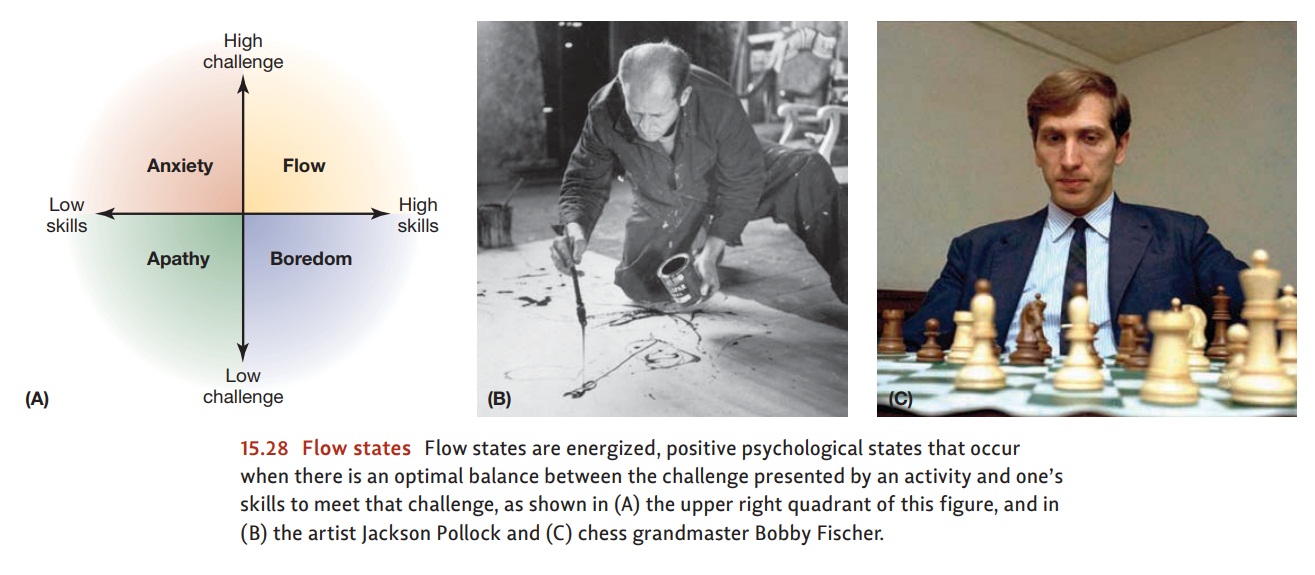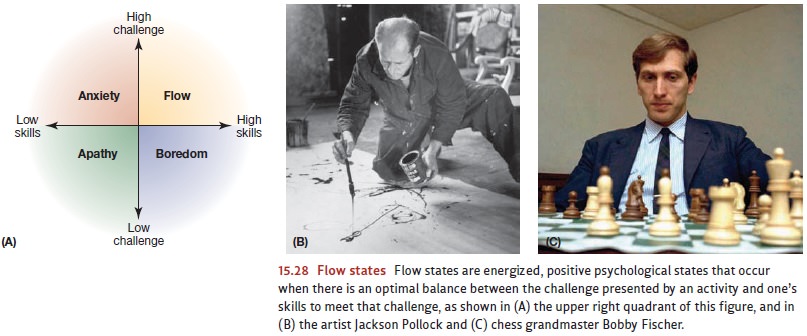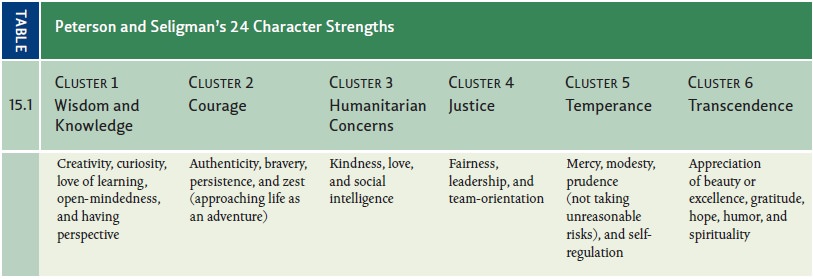Chapter: Psychology: Personality
The Humanistic Approach: Positive Psychology

Positive Psychology
Modern
researchers have taken heed of another insight offered by Maslow, Rogers, and
other humanists, who enjoined psychologists not to focus so much on deficiency
and pathology. Instead, these early humanists emphasized that humans also have
positive needs—to be healthy and happy, and to develop their potential. These
points underlie a relatively new movement called positive psychology.
In
the last decade or so, there has been a tremendous burst of research activity
that has sought scientifically to examine optimal human functioning (C.
Peterson, 2006). The focus of this research has been on positive subjective experiences, such as happiness, fulfill-ment,
and flow; positive individual traits,
including character strengths, values, and inter-ests; and positive social institutions, such as families, schools,
universities, and societies. In the next sections, we consider what positive
psychology has found concerning positive states and positive traits.
POSITIVE STATES
Novelists,
philosophers, and social critics have all voiced their views about what
hap-piness is and what makes it possible. Recently, academic psychologists have
also entered this discussion (e.g., Ariely, 2008; Gilbert, 2006; Haidt, 2006;
Lyubomirsky, 2008; B. Schwartz, 2004). What has research taught us about
happiness?
One
intriguing finding concerns the notion of a happiness set point, a level that appears to be heavily influenced by
genetics (Lykken & Tellegen, 1996) and is remark-ably stable across the
lifetime—and thus relatively independent of life circumstances. What produces
this stability? The key may be adaptation, the process through which we grow
accustomed to (and cease paying attention to) any stimulus or state to which we
are continually exposed. One early demonstration of this point comes from a
study that compared the sense of well-being in people in two rather different
groups. One group included individuals who had recently won the lottery; the
other was a group of para-plegics (Brickman, Coates, & Janoff-Bullman,
1978). Not surprisingly, the two groups were quite different in their level of
happiness soon after winning the lottery or losing the use of their limbs. When
surveyed a few months after these events, however, the two groups were similar
in their sense of contentment with their lives—an extraordinary testimony to
the power of adaptation and to the human capacity for adjusting to extreme
circumstances.
Adaptation
is a powerful force, but we must not overstate its role. Evidence suggests that
everyone tends to return to their happiness set point after a change (positive
or negative) in circumstances, but there are large individual differences in
how rapid and complete this return is. Thus, some people show much more of a
long-term effect of changes in marital status (Lucas, Clark, Georgellis, &
Diener, 2003) or long-term dis-ability (Lucas, 2007). Clearly, set points are
not the whole story; circumstances matter as well—more for some people than for
others.
So
far, we have focused on what positive psychologists have been learning about
happi-ness, but they are also concerned with other positive states, such as the
energy and focus that are evident when the individual is fully engaged by what
she is doing. Csikszentmihalyi (1990) has examined such states by studying the
experiences of highly creative artists. He found that the painters he studied
became so immersed in their painting that they lost themselves in their work,
becoming temporarily unaware of hunger, thirst, or even the pas-sage of time.
Csikszentmihalyi called the positive state that accompanied the artists’
paint-ing “flow,” and he documented that far from being unique to artists, the
same sort of highly immersed and intrinsically rewarding state is evident in
rock climbers, dancers, and chess players (Figure 15.28). By systematically
studying people as they work and play,

Csikszentmihalyi
has found that flow is most likely to be experienced when there is an opti-mal
balance between the challenge presented by an activity and one’s skills to meet
that challenge. If the level of challenge is too low for one’s ability, one
feels bored. If the level of challenge is too high for one’s ability, one feels
anxiety. But if the challenge is just right— and one feels that the activity is
voluntarily chosen—one may experience flow.
POSITIVE TRAITS
Positive
psychologists have been concerned not just with positive states, like feeling
happy; they have also been concerned with positive traits—what we might think
of broadly as being a good person (Peterson & Seligman, 2004). This
interest has aligned them to some degree with the trait approach. However,
positive psychologists emphasize delineating a set of narrower and more
specific traits, namely, the “positive” or “desirable” traits.
Defining
and understanding these traits has been a central concern since the earli-est
days of psychology (James, 1890), but the topic was set aside as too
philosophical and value-laden for many years. Only in the past decade has the
systematic exposition of positive traits again come to the fore. One notable
effort, led by Christopher Peterson and Martin Seligman, has focused on
developing a classification of characterstrengths
(Peterson and Seligman, 2004)—personal characteristics that (1)
contributeto a person’s happiness without diminishing the happiness of others,
(2) are valued in their own right, rather than as a means to an end, (3) are
trait-like and show variation across people, (4) are measurable using reliable
instruments, and (5) are evident across cultures, rather than specific to one
or a few cultures (C. Peterson, 2006).
Peterson
and Seligman have identified 24 character strengths with these attributes,
organized into six clusters, as shown in Table 15.1. The first cluster of
character strengths centers around wisdom and knowledge; the second cluster
centers around courage; the third cluster centers around humanitarian concerns;
the fourth cluster centers around justice; the fifth cluster centers around
temperance, defined by an absence of excess; and the final cluster centers
around transcendence.
This
is a broad list—but may not be broad enough. For example, other researchers
have emphasized a role for optimism—a generalized expectation of desirable
rather than unde-sirable outcomes (Scheier & Carver, 1985). Another
important character strength is resilience,
which refers to surviving and even thriving in the face of
adversity—includingsuch extreme circumstances as serious illness, hostile
divorce, bereavement, and even rape

and
the ravages of war. These positive tendencies appear to be associated with a
number of important life outcomes, such as greater success at work, with
friends, and in marriage (Lyubomirsky, King, & Diener, 2005). The strengths
also matter for one’s physiological functioning and health (Ryff et al., 2006;
Salovey, Rothman, Detweiler, & Steward, 2000). For example, people who are
generally optimistic also have a better-functioning immune system and so are
more resistant to problems that range from the common cold to serious illness
(Pressman & Cohen, 2005; Segerstrom, 2000).
Related Topics